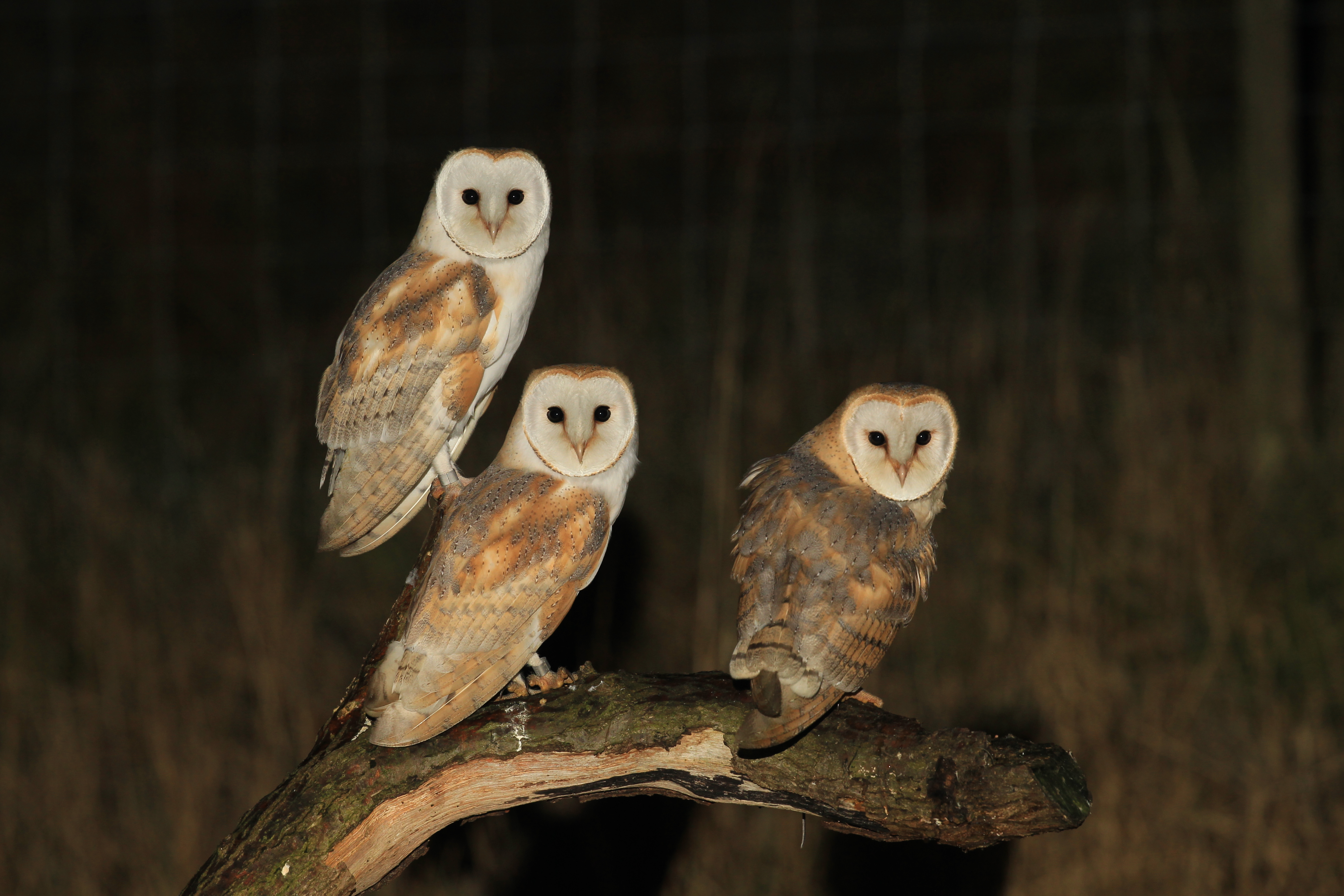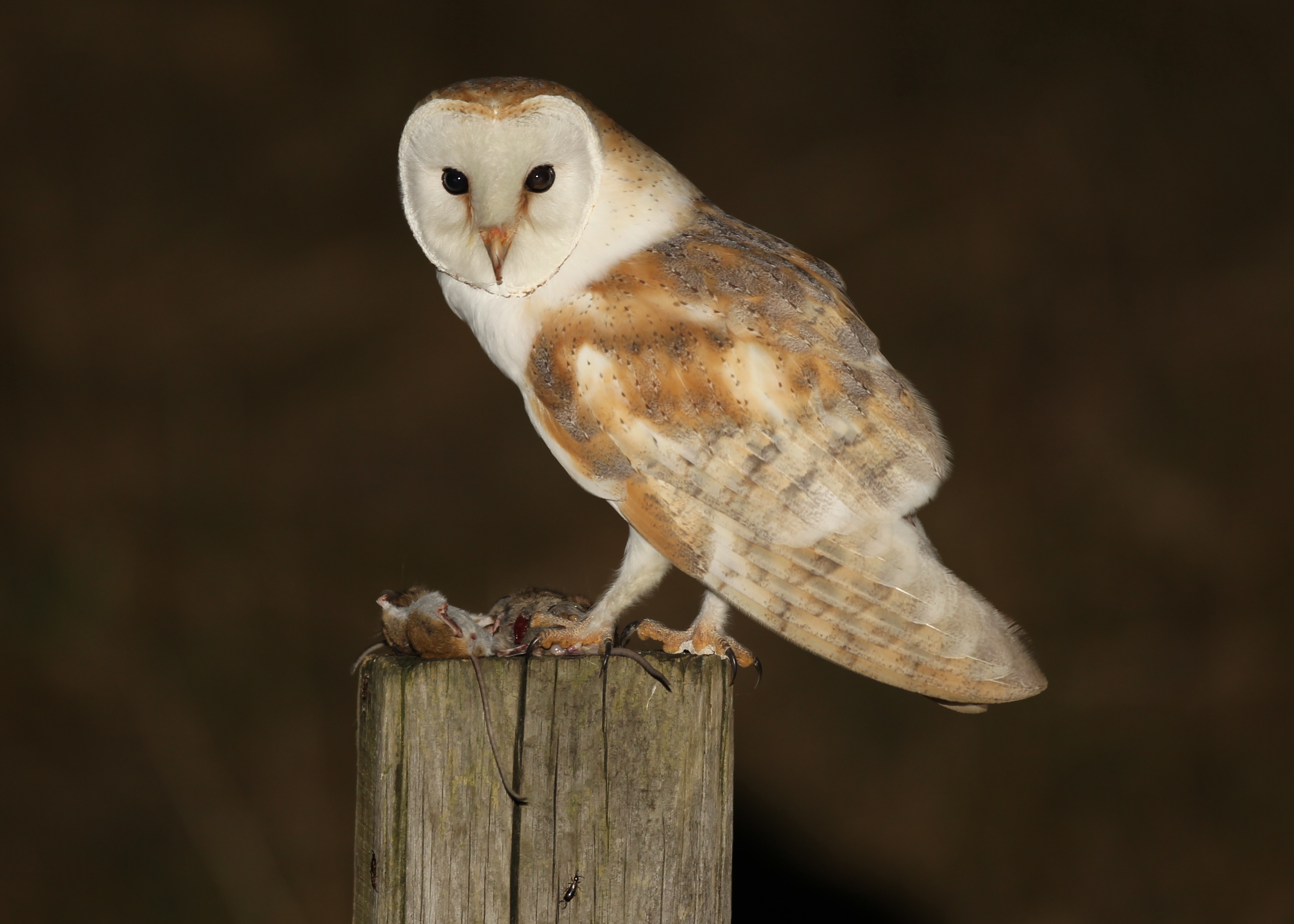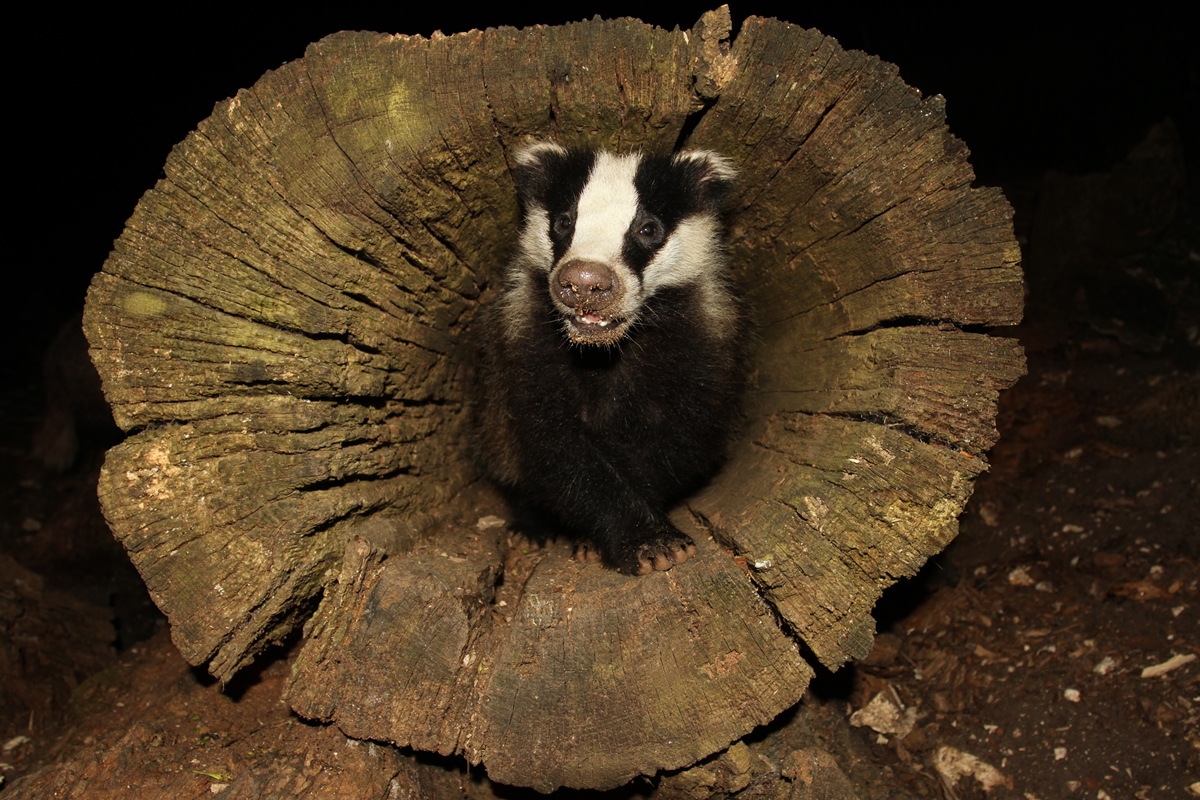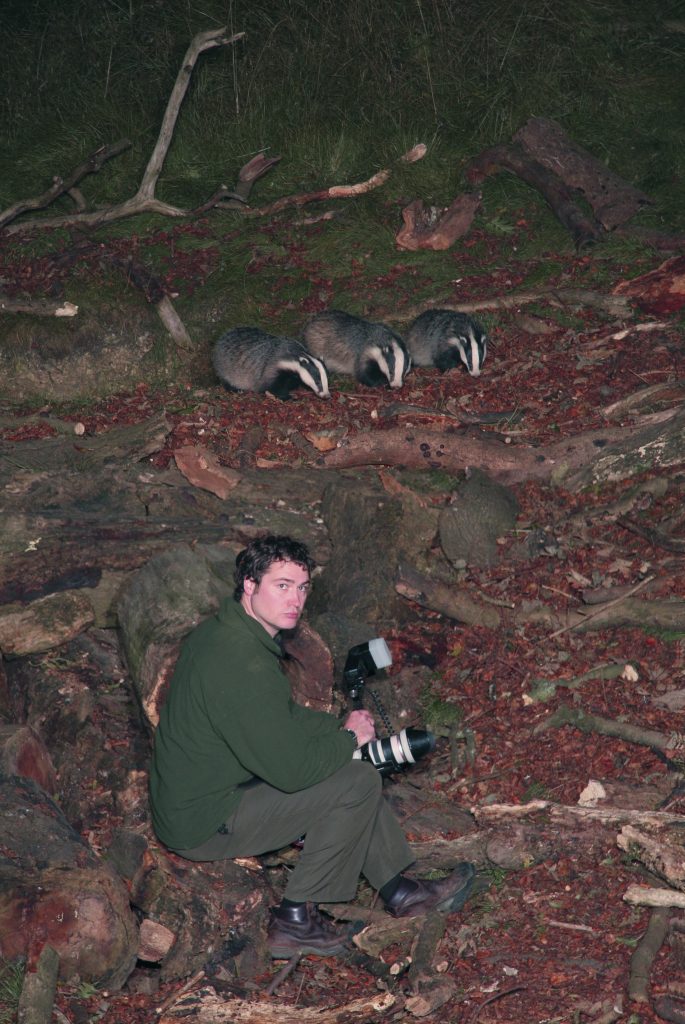Wildlife at night
The dark nights of winter never stop me getting out and about. In fact, I love walking in the dark. This is a time when my hearing becomes my primary sense and my landscape is my soundscape.
Listening for animals
After a lifetime of watching wildlife on a daily basis I’m already fairly attuned to using my ears. I often hear clues about the wildlife before I see it. For instance, on a summer’s day if I hear a swallow call out in alarm overhead, nine times out of ten the sound will be followed by the sight of a sparrowhawk flashing by. Or, the softer sound of a black bird calling will alert me to the presence of a stoat or a weasel.
Night walking
The same is true of walking in the dark. Every night I walk down the valley below my gallery to put food out for the barn owls and badgers that live there. This is my favourite time as I learn as much about the local wildlife as I would during the day. The landscape is strangely beautiful in this monochrome state, the sky punctuated with trees that look like skeletons when stripped bare of their leaves. Sometimes the shapes of the valleys are enhanced by a low mist hanging in the valley.
I navigate by the light of the moon or the stars. After a long day painting my eyes are often sore, so I enjoy this walk. I wear a head torch, but only use it if I have to. And even then I leave it on its dimmest setting. Often the weather is less than desirable, with driving rain or sleet. But on even on those walks when the weather has been at its worst I have had close encounters with wildlife. One windy and rainy night, I heard an animal’s startled footsteps directly in front of me. I switched on my torch to find myself practically eye to eye with a roe buck. The last thing it was expecting was to bump into me, especially as the sound of my coming had been muffled by the weather. On subsequent evenings the buck became used to me and lately it just glances up as I pass.
Winter wonders
Frosty nights are my favourites or better still when there is a covering of snow on the ground that reflects the light. But each night is different. Throughout the winter months from mid to late October I can hear migratory birds flying overhead. I’ve heard redwings call sharply as they fly above me. I often hear teal, a small species of duck, making their beautiful ‘plink-plink’ call as I walk along. You don’t expect to hear this sound here in Thixendale as teal are more common near wetlands than in dry chalkland valleys. And, the nearest water is miles away. Even, in the daytime it would be very rare to see a teal fly past, but on my night walks I hear hundreds. I also hear other ducks such as pintail and widgeon and swans too. Sometimes, I even hear a moorhen calling overhead. I had to stop and listen when I first picked out its repeating calls. I have only ever seen one moorhen during the day in 19 years living here at Fotherdale Farm.

Barn owls screeching
Another feature of my soundscape is the screech of a male barn owl proclaiming its territory. Over the last few months the barn owl in the valley has been desperately trying to attract a mate to an elm stump near my garden. It has been digging a nest scrape here since Christmas, ready to impress a female. And of course there’s the ocarina, reverberating call of a male tawny owl. Most nights he is lodged in a beech stump in the garden; also courting a mate well before the breeding season.

Foxes calling
In January I often hear a dog fox calling as I set off down the valley. And then, as if it were an echo, another returns its call from the other side. Once I switched on my torch and picked up the eye-shine of the fox out on an arable field near the gallery. Strangely he didn’t run, but just watched me as I passed by. As I watched him there was a clatter of wings and the noise of a bird taking off, but I knew the sound of the wingbeat above my head that this was just a wood pigeon. Further along my route I heard a larger bird trying to take off. I switched my torch on. It was a young female buzzard. I turned my torch off and walked away leaving it to roost.
Visible in the silhouette-skeleton of an ash tree above my head there was a cock pheasant, so close I swear I could reach up and pull its tail. It sat stock still, hoping I wouldn’t see it. But its silhouette was so conspicuous against the night sky it was easy to spot. This week I heard a sound that I haven’t heard all winter; the haunting call of a curlew. This sound is so uplifting. It means that the curlews are back on the Wolds ready for the breeding season. And curlews are not the only waders I can hear at night. The lapwings are back too. On moonlit nights you can hear their rasping wing beats, followed by a breathy ‘pee-wit’.
Badgers after dark
 I love these walks back and forth down the valley where I feed barn owls and badgers at their sett. I hear and see so much wildlife in the dead of winter. But my highlight is always the moment I arrive at the badger sett. As I approach I am often followed closely by a barn owl. It flies right over my head, creating a shadow in the moonlight that moves right across my shoulder. It lets out an eerie screech as if it’s saying, “You’re late.” It lands on a post and waits for me to put some food out for it.
I love these walks back and forth down the valley where I feed barn owls and badgers at their sett. I hear and see so much wildlife in the dead of winter. But my highlight is always the moment I arrive at the badger sett. As I approach I am often followed closely by a barn owl. It flies right over my head, creating a shadow in the moonlight that moves right across my shoulder. It lets out an eerie screech as if it’s saying, “You’re late.” It lands on a post and waits for me to put some food out for it.

Night walks for wildlife
After feeding the owl, I usually put my torch on so that I can see who else is about. It’s not long before I pick up the eye-shine of the badgers. I have been walking down to this sett each night for eight years now and have become an accepted member of the clan. I usually sit on the ground amongst them and watch up to eight barn owls fly about above me at the same time. Nightfall is always the best part of my winter’s day. All you have to do is get out there and use your ears. And don’t be afraid of the dark.
